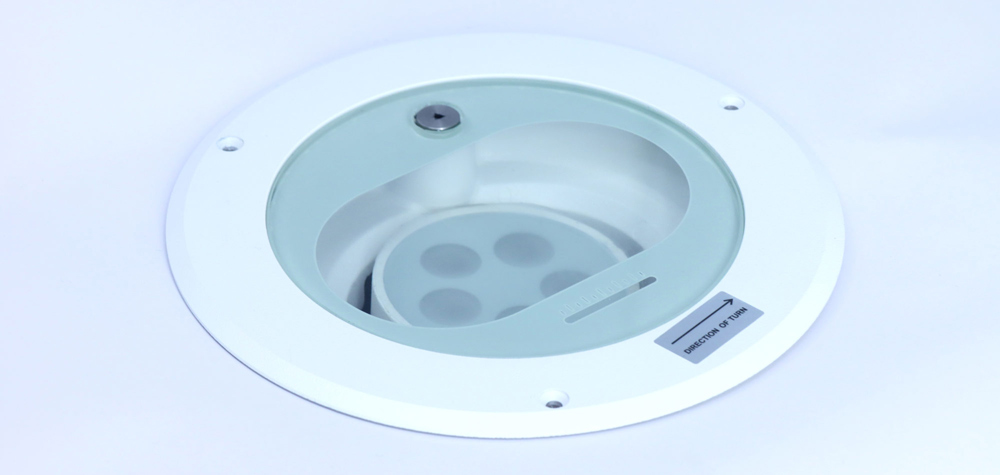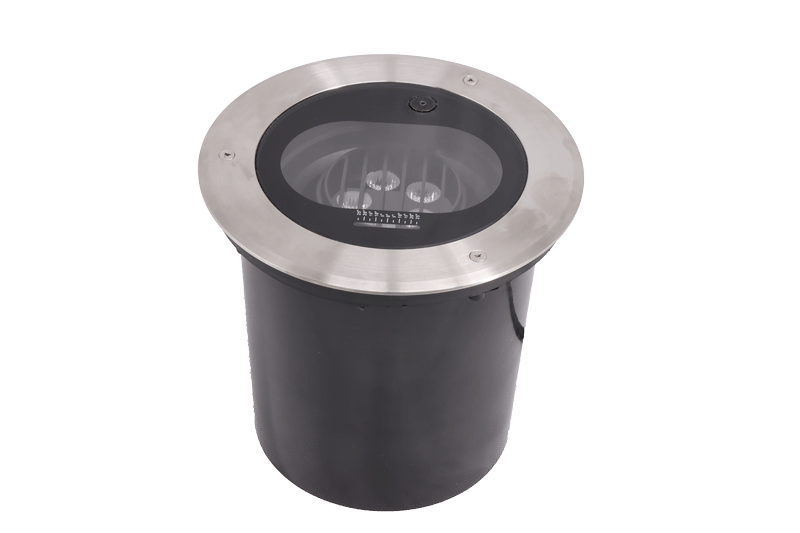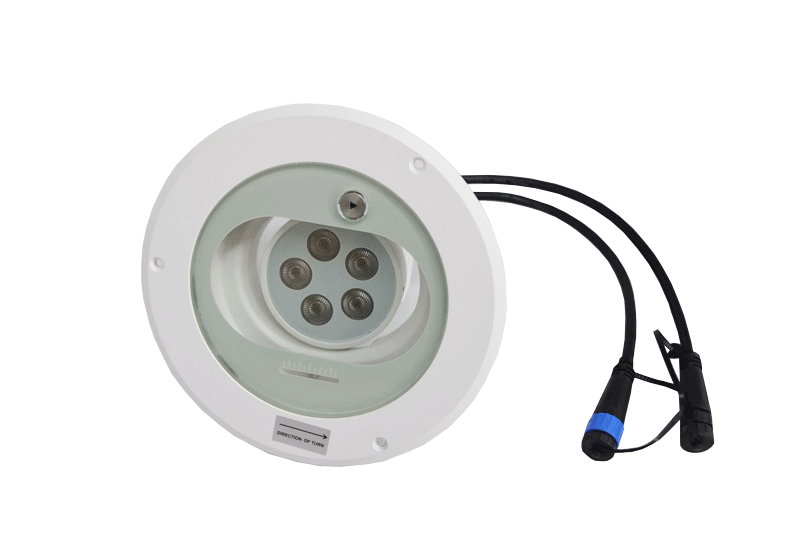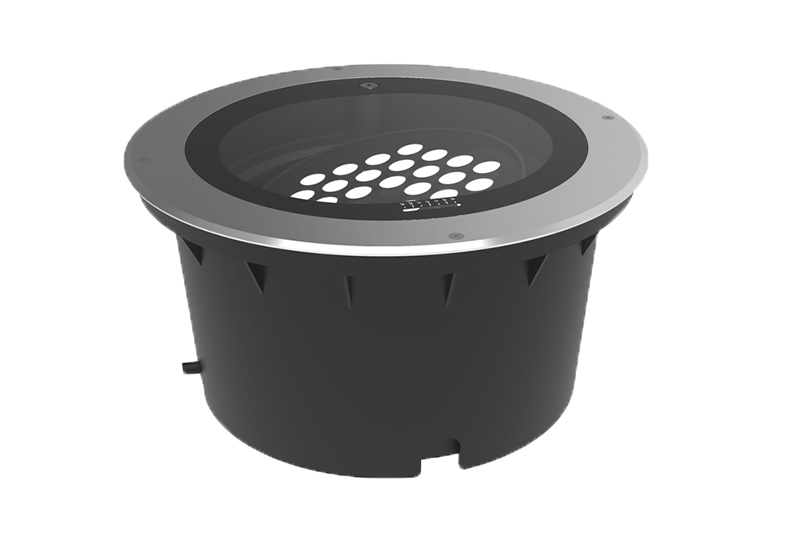Taking Aim
The initial problems with inground up-lights were many.
Even the best of the earlier iterations was burdened with numerous issues all related to the laws of physics and the objective of burying a powerful up light in the ground, or hard landscape.

Then expecting it to be accurately focused and reliable despite the fact that it would be hot sometimes and cool at others. Gases expand and contract with temperature, and if they cannot do this due to a fixed volume then the pressure increases and decreases.
The objectives were and remain at odds with the physics. How many ingrounds have you seen with water inside, or at least condensation?
Thus far the inground market had not been attractive to Illumination Physics.
To be fair to the first generation of high end ingrounds, they came out of the factory with the seals well assembled. However, that precision often did not survive the first lamp change in the field. The seals are also compromised if the fixture needs to be opened for aiming.
The advent of LED ingrounds was a leap forward of sorts because the consumable light source was eliminated. In theory it was no longer necessary to open the fixture to replace a lamp. Aiming became the remaining issue.
Now the timing for illumination Physics was perfect and we have created a new family of aimable inground or recessed fixtures.
Within the inground kit we have included a stainless steel gimbaled IP68 luminaire that is completely potted with silicon, so there is no airspace inside - It cannot allow ingress of gas or water. The luminaire resides within the waterproof drum and face plate enclosure for the burial model rated at IP67.
Illumination Physics also provides another version without the inground kit which is intended for mounting in recessed applications that are not in the ground itself.
The remaining issue is – how to aim the inground luminaire; after the fixture has been installed, but without opening the kit?
Illumination Physics has provided the answer with a family of three new inground luminaires that can be aimed post installation without compromising the ingress protection rating because the fixture does not need to be opened.
Currently there are three models available.
A 5 LED version with 12 watts
A 12 LED version with 24 watts
A 36 LED version with 48 watts
The post install aiming is the same for all of them.



This is how it works.
On the periphery of the face plate that is a stainless steel lug which is sealed with an O ring.
The lug is a TORX head type with a triangular socket that can be unscrewed with the TORX tool supplied with each fixture.
With the lug removed there is now access to the aiming mechanism for the luminaire within. The TORX tool is inserted into another triangular socket inside the fixture.
By turning the tool clockwise or anticlockwise the luminaire can be tilted by up to 25 degrees beyond or behind the vertical position.
Turn the luminaire on and adjust the aim. There is an indicator scale visible under the face plate, but fine adjustment should be made by observing the illuminated result.
Turn the luminaire off and allow it to cool before replacing the lug in the faceplate.
The IP aimable inground family are available in AC or DC CC powered versions using 24 or 48 volt remote drivers. Dali and DMX control versions are also available. A wide variety of LED colours and colour temperatures are available as well as symmetrical lenses in 5, 10, 25, 40, 60 degrees and asymmetric lenses in 10 X 35 and 10 X 60 degrees.